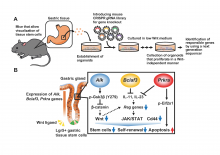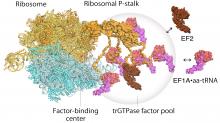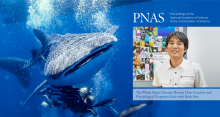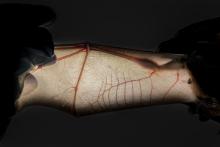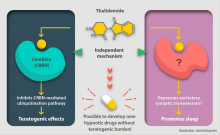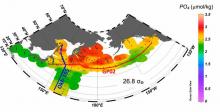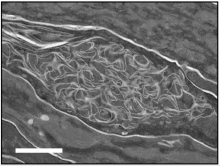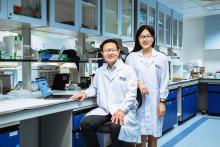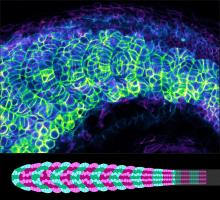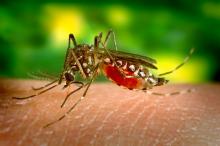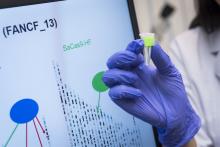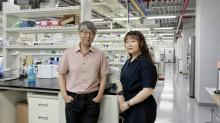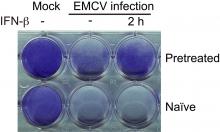Proceedings of the National Academy of Sciences (PNAS)
News
09 Feb 2021
Tissue stem cells can self-renew and differentiate, supplying cells necessary for tissues at various developmental stages. However, detailed analysis in vivo is difficult, so the molecular mechanisms underlying the stemness of gastric tissue stem cells have remained a mystery. Here, by using organoids that mimic tissue structure and function in vivo and GeCKO screening to inactivate arbitrary genes, Alk, Bclaf3 and Prkra have been identified as genes regulating stemness.
07 Jan 2021
Factor-pooling by ribosomes caught on video using state-of-art high-speed atomic force microscopy technology.
16 Dec 2020
Daegu Gyeongbuk Institute of Science and Technology (DGIST) researchers gain deeper insight into a cell membrane channel, with potential implications for drug development.
20 Nov 2020
A research team, affiliated with South Korea's Ulsan National Institute of Science and Technology (UNIST) has presented the whole-genome sequence and analyses of the endangered whale shark (Rhincodon typus), the largest extant fish on Earth.
19 Nov 2020
A research team, affiliated with South Korea's Ulsan National Institute of Science and Technology (UNIST) has identified a new metabolic pathway, in which microorganisms utilize single carbon (C1) gases (CO and CO2) as a feedstock.
29 Oct 2020
Scientists at The University of Tokyo use a two-state model based on the formation of tetrahedral structures to explain water’s anomalous properties and the surprising liquid–liquid transition of water.
26 Oct 2020
Study confirms bats adopt multiple strategies to reduce pro-inflammatory responses, thus mitigating potential immune-mediated tissue damage and disease. Findings provide important insights for medical research on human diseases.
28 Sep 2020
Researchers from the University of Tsukuba demonstrate that the hypnotic and teratogenic effects of thalidomide are separable.
Thalidomide is a medication with several different effects, one of which is promoting sleep in the context of insomnia. In a new study, researchers from the University of Tsukuba have discovered that thalidomide exerts its hypnotic effects through mechanisms distinct from those for the drug’s notorious teratogenicity.
These are striking results showing how thalidomide induces sleep independently of its known effects on the teratogenic cereblon pathway. These findings could be helpful in developing novel thalidomide-like hypnotic drugs without thalidomide’s teratogenic effects.
The study was published in the scientific journal Proceedings of the National Academy of Sciences of the United States of America.
07 Aug 2020
A group of researchers from three Japanese universities has discovered why the western subarctic Pacific Ocean, which accounts for only 6 percent of the world’s oceans, produces an estimated 26 percent of the world’s marine resources.
27 Jul 2020
Hokkaido University researchers have found a soft and wet material that can memorize, retrieve, and forget information, much like the human brain. They report their findings in the journal Proceedings of the National Academy of Sciences (PNAS).
16 Jul 2020
A research led by the Department of Geography at Hong Kong Baptist University (HKBU) has revealed that the observed average moving speed (or translation speed) of tropical cyclones making landfall over the coast of China dropped by 11% between 1961 and 2017. These slow-moving tropical cyclones brought about 20% more local total rainfall on average when compared with fast-moving ones, resulting in greater flood risks in the region.
19 Mar 2020
Environmental changes trigger tiny RNA segments to modify plant pores involved in photosynthesis.
29 Jan 2020
Hokkaido University scientists are getting closer to understanding how a rare hereditary disease impairs the skin’s barrier function, which determines how well the skin is protected.
14 Jan 2020
A team of researchers from the National University of Singapore has developed a personalised assessment tool which can detect the incidence of cancer, predict patient survivability and determine patient suitability for immunotherapy cancer treatment.
23 Dec 2019
NUS researchers found that chevron patterns in fish swimming muscles require physical forces to correctly develop, not only from genetic instruction or biochemical pathways.
22 Nov 2019
A new study has discovered meteorites containing RNA sugar, ribose, and other bio-important sugars; the first direct evidence of bio-essential sugars' delivery from space to the Earth.
11 Nov 2019
International collaboration is finding new ways to improve how scientists develop and test models to forecast dengue infection.
01 Nov 2019
A team of researchers from City University of Hong Kong (CityU) and Karolinska Institutet has recently developed a new protein which can help increase the targeting accuracy in the genome editing process. It is believed that it would be useful for future gene therapies in human which require high precision.
21 Oct 2019
A group of neurons called the corticobasal ganglia projecting neurons are important for vocal learning in young birds, but not in adult birds, according to a study published in the journal Proceedings of the National Academy of Sciences (PNAS).
06 Sep 2019
A recent study, affiliated with South Korea's Ulsan National Institute of Science and Technology (UNIST) has identified the sleep-promoting effects of dietary threonine, as well as its neurobiological principle.
28 Aug 2019
An international team has used AI to create a 3D simulation of the Universe.
22 Aug 2019
New microscopy technique provides unprecedented insight into nanoscopic slip layers formed in flowing complex liquids.
16 Aug 2019
The protein that revives injured nerve cells was discovered. It is expected to present a new direction in the development of therapeutic agents for regenerating damaged brain or spinal cord nerves.

05 Aug 2019
Two known gene mutations induce pathways that enhance pancreatic cancer’s ability to invade tissues and evade the immune system. Researchers report the molecular details of this process providing insights into druggable targets for immunotherapies.
08 Feb 2019
Computational models reveal possible weak spots in the HIV surface protein, identifying new targets for drug and vaccine design.
07 Jan 2019
Korean researchers have clarified the fundamentals of coiled toxin protein which causes neurodegenerative brain disorders. The result is expected to speed the development of treatment for neurodegenerative disorder.

22 Nov 2018
For the first time since its inception, Singaporean researchers were not listed.

19 Nov 2018
A variety of animals have male-specific ornament traits and these ornaments are favored by female choice. Which male traits are preferred by females often varies among females. Genetic mechanisms that create and maintain variations in female preference has been one of the central questions in evolutionary ecology.
25 Oct 2018
The innate immune system may be able to be trained to react to viral infections more efficiently by repeated exposure to anti-viral signaling molecules.
Events
Sorry, no events coming up for this topic.
Researchers
Sorry, no researchers coming up for this topic.
Giants in history
Sorry, no researchers coming up for this topic.


